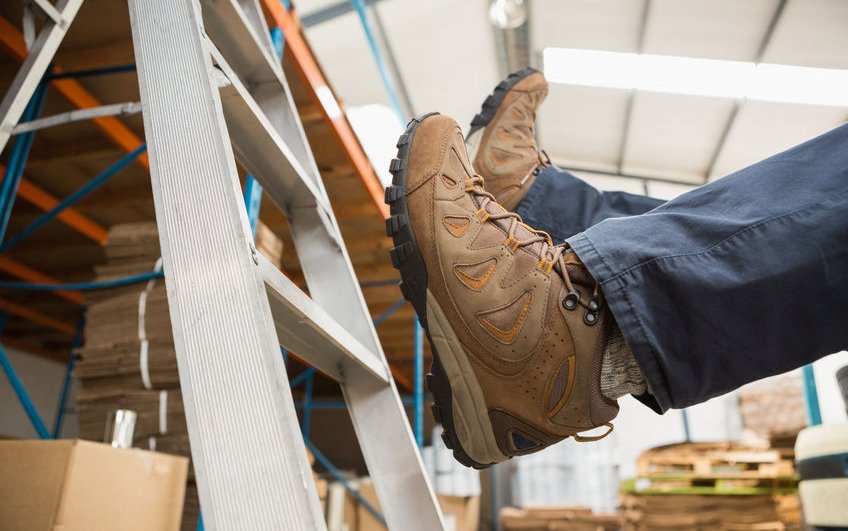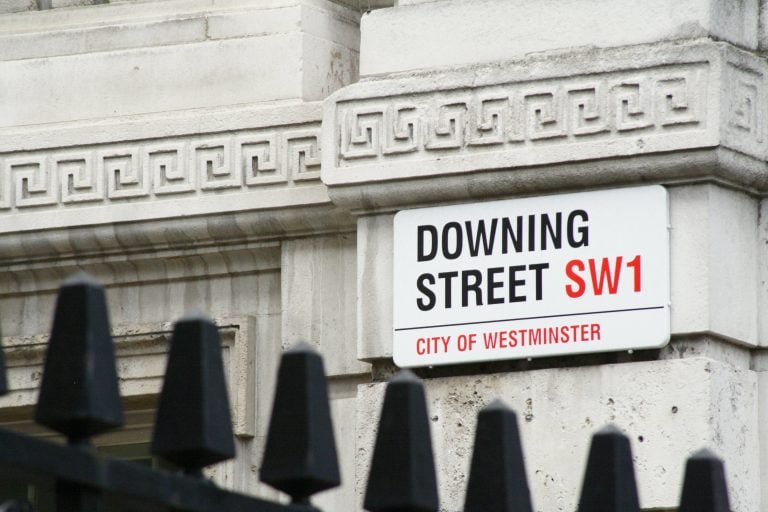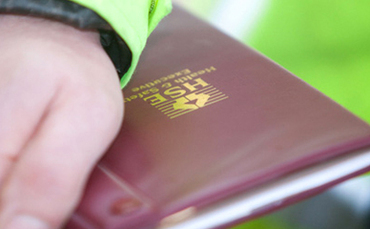BLOG
HSE injury and ill-health statistics 2020 | Some improvements but challenges remain
The Health and Safety Executive (HSE) has now published its annual summary statistics for 2019/20.
The report, which is released each October, provides insight into work-related injury and ill-health in Great Britain, based on the self-reports of people who worked in the last 12 months.
As well as a general snapshot of how the nation is performing in relation to health and safety at work, the report also provides industry-specific data, information on the costs of occupational injury and ill-health to Britain, comparisons with other European countries, and enforcement statistics.
We’ve summarised the salient points from this year’s release below.
Workplace fatalities
As always, the summary statistics follow the HSE’s fatality statistics published in July. Encouragingly, figures for 2019/20 showed the fewest work-related fatalities on record at 111, down from 147 in 2018/19, though it is unclear what role, if any, the coronavirus (COVID-19) pandemic might have played in these promising stats. Though this figure is often revised in the summary statistics as it is based on provisional RIDDOR data, the newly published report confirms the figure at 111.
Our Director of Health & Safety Services, Nick Wilson, said: “While there is cause for cautious optimism, employers cannot afford to become complacent. COVID-19 is obviously the focus for employers right now, but this shouldn’t detract from other serious workplace risks or we might find ourselves reflecting on an entirely different set of figures next time around, especially as instances of COVID-19 are reportable under RIDDOR if the disease resulted from occupational exposure.”
Work-related ill health
The headline statistic is that 1.6 million workers suffered from work-related ill health (new or longstanding) in 2019/20. This figure had remained static at 1.4 million for the past two years.
Echoing last year’s findings, stress, depression and anxiety remains the number one cause of work-related ill health, and this year’s figures indicate a growing problem. Last year, these conditions accounted for 44% of ill-health cases, while this time around they made up over half (51%). The report reveals that:
- 828,000 workers suffered from work-related stress, depression or anxiety (new or long-standing) in 2019/20, 347,000 of which were new cases. This is a notable increase on last year (602,000 total cases, 246,000 new).
- Rates of stress, depression and anxiety were highest in the electricity, gas, steam and air conditioning supply; public admin/defence; human health/social work, and education sectors.
- Workload, lack of support, violence, threats or bullying and changes at work are estimated to be the main causes, based on 2009/10 to 2011/12 LFS data.


Meanwhile, musculoskeletal disorders (MSDs) – conditions affecting the muscles, nerves, tendons, joints, cartilage and spinal discs often caused by manual handling and DSE use – have persisted as the second highest cause of ill health, accounting for 30% of all cases.
- 480,000 workers suffered from work-related MSDs (new or longstanding) in 2019/20, 152,000 of which were new cases. Though more new cases were reported than last year (138,000), the total number is down from 498,000.
- MSDs most commonly affected the upper limbs or neck (44%), followed by the back (37%) and lower limbs (19%).
- Manual handling, awkward or tiring positions and keyboard work or repetitive action are estimated to be the main causes of work-related MSDs, based on 2009/10 to 2011/12 LFS data.
Combined, these top two catalysts for ill health were responsible for an estimated 26.8 million working days lost out of a total of 32.5 million working days lost to work-related ill health.
Nick Wilson commented: “Unfortunately, both mental health conditions and MSDs are likely to be exacerbated by the upheaval caused by the coronavirus pandemic. With the hardships this has created for people and many now working from home, there is a real potential for feelings of stress and isolation, and of course home set-ups are likely to contribute to issues such as back pain. If you are considering more permanent homeworking arrangements, these statistics are a timely reminder that a homeworking risk assessment should be carried out to evaluate and control these risk areas.”
Non-fatal workplace injury
Figures show that around 693,000 workers sustained non-fatal injuries in 2019/20. Of these, 168,000 resulted in absences of over seven days, contributing to an estimated total of 6.3 million working days lost.
The five most common causes of accident remain the same as previous years: slips, trips or falls on the same level (making up 29% of all non-fatal work-related injuries), handling, lifting or carrying (20%), bring struck by a moving object (10%), acts of violence (8%) and falls from height (8%).
While self-reports are up from last year’s 581,000, the rate of self-reported non-fatal injury shows a generally downward trend but has been broadly flat in recent years. The rate of non-fatal injury to employees reported by employers under RIDDOR also shows a downward trend.
Costs to Britain
The report reveals that new cases of work-related ill health cost Britain £10.6 billion in 2018/19, while workplace injury cost £5.6 billion. This is up from £15 billion in the two years prior.
This total cost is broken down into £3.2 billion to employers, £3.5 billion to the government and £9.6 billion to individuals. It covers financial costs such as loss of output, healthcare costs and other payments made, as well as human costs – the monetary valuation given to pain, grief, suffering and loss of life.
Nick Wilson said: “The financial costs of poor health and safety practices are often grossly underestimated, and individual injuries or bouts of ill health have much wider implications for employers and society as a whole.
“Employers often prioritise safety over health, but these statistics consistently show that it is actually ill health which has the greater financial implications.”

Industries
Reflecting the longstanding picture, industries where the rate of work-related ill health is statistically significantly higher than the all-industry rate include human health and social work activities, public administration/defence, and education.
Rates of workplace injury are statistically significantly higher in agriculture, forestry and fishing; construction; manufacturing; wholesale/retail trade (including motor vehicle repair), and accommodation/food service activities sectors. The public administration/defence industry, which fell into the statistically significant category last year, now shows no statistically significant difference in injury rates.
Enforcement
Enforcement action has declined compared to previous years.
- The number of cases prosecuted has decreased from 364 to 325.
- The number of enforcement notices issued has decreased from 11,040 to 7,075.
- Total fines have dropped from £54.4 million to £35.8 million, with the average fine per conviction in 2019/20 coming in at £110,000 compared to £150,000 in 2018/19.
Still more to be done
While this is reassuring news for employers, HSE Chair Sarah Newton stressed that workplace health and safety is firmly under the spotlight due to COVID-19 and that “HSE remains committed to taking action where workers are not protected.”
Speaking on the latest stats, Newton said: “Although Great Britain continues to be up there with the safest places in the world to work, these figures highlight the scale of the challenge HSE currently faces in making Britain an even healthier and safer place to work, this includes our role in the response to the pandemic to ensure workplaces are Covid Secure.
“We must continue to drive home the importance of managing risk and promoting behaviours to ensure employers work right so that workers are able to go home healthy and safe at the end of each day.”
The full report is available here.

Struggling to manage your safety responsibilities?
To discover how Ellis Whittam’s fixed-fee Health & Safety support can help you to raise safety standards, maintain compliance and reduce risk across your organisation, all while saving you time and money, get in touch today on 0345 226 8393.
Sign up for the latest news & insights
Resources
Latest News & Insights

Changes to day one unfair dismissal rights | New six-month protection explained
BLOG Written by Patrick Carroll-Fogg on 1 December 2025 Of the almost 75 individual tweaks and changes set to be introduced under the Employment Rights

Breaking down the Budget 2025 for employers
BLOG Written by Daniel Rawcliffe on 27 November 2025 The recently announced UK Budget 2025 is a challenging one for small businesses. While it covers

AI for interviews with job candidates | Balancing technology with a human touch
BLOG Written by Danielle Fargnoli-Read and Tracey Burke on 21 November 2025 AI is reshaping the way UK businesses approach hiring, offering benefits such as

Workplace risks revealed | HSE 2024/25 report shows rising injuries and ill health
BLOG Written on 21 November 2025 Providing a safe, healthy workplace should be a top priority for all employers. But how well are workplaces actually

CQC under scrutiny | Inspection gaps highlight need for compliance readiness
BLOG Written on 12 November 2025 A recent BBC article highlighted that the Care Quality Commission (CQC) failed to routinely inspect a service previously rated

Duty to prevent sexual harassment | Almost half of UK businesses aren’t compliant
BLOG Written on 11 November 2025 Almost a year since the Worker Protection Act 2024 came into force, new research from our team at WorkNest

Unconscious bias in the workplace | Lessons from The Celebrity Traitors
Blog Written by Andrew Moore on 7 November 2025 The Celebrity Traitors has had us all hooked. While we tune in for the twists, betrayals

Best interview techniques for employers | 5 simple strategies for success
BLOG Written by Danielle Fargnoli-Read on 22 October 2025 The interview process hasn’t changed much in decades – and candidates can tell. Recycled questions, rigid

What happens if an employee resigns during the disciplinary process?
Bridging the growing gap between employers and today’s job seekers.

